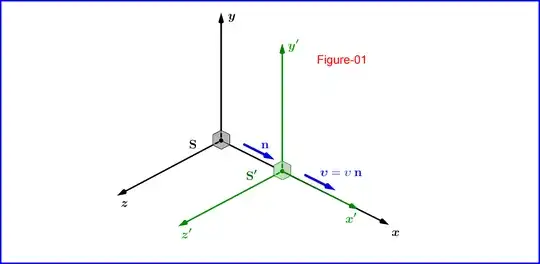Rather than approaching from the fields ($F^{\mu\nu}$, $A^\mu$, etc.), a more direct approach, starting from matter, can be suggested.
In fact, the charge density $\rho (t, x^i )$ and the current density $J^i (t, x^i )$ for a point charge $q$ a charge moving with velocity $V^i (t) = \frac{d}{dt} w^i (t) $ is
$$ \rho (t, x^i) = q \delta^{(3)}(x^i - w^i(t)) $$
$$ J^i (t,x^i) = q V^i (t) \delta^{(3)}(x^i - w^i(t)) $$
and we can combine these and write as
$$ J^\mu (t, x^i) = q \left( 1, V^i (t) \right) \delta^{(3)}(x^i - w^i(t)), $$
where $\mu = 0, \ 1, \ 2, \ 3$ and $ i = 1, \ 2,\ 3 $.
Now, please observe that, if we reparametrize the particle's space-time position by the proper time ($t = t(\tau) := w^0 (\tau)$ and $w^i = w^i(\tau)$),
$$ J^\mu (x^\mu) = q \int d \tau \ u^\mu (\tau) \delta^{(4)}(x^\mu - w^\mu(\tau)) \cdots (\ast)$$
$$ \left( \delta^{(4)}(x^\mu - w^\mu(\tau)) = \delta(t - w^0(\tau) ) \delta^{(3)}(x^i - w^i(\tau)) \right),$$
where $\tau$ and $u^\mu = \frac{d}{d\tau} w^\mu = \frac{dt}{d\tau} ( 1, V^i )$ are the proper time and 4-velocity of the point charge, respectively.
(This equation is introduced not only in relativity texts but also in books regarding electromagnetism (Jackson Ch.12, for example).)
Please notice that from this expression, we can obviously see that $J^\mu$ transforms like $u^\mu$ which is a contravariant quantity ($u^\mu = dx^\mu/d\tau$ and $dx^\mu$ is by definition contravariant and $d\tau$ is Lorentz invariant). This can be the answer of your question. Physically (or geometrically), equation $(\ast)$ provides a picture of "the distribution of charge and current for a charged particle as a superposition of charges that momentarily flash into existence and then flash out of existence." (Misner, Thorne, Wheeler: 120-121) 4-current is just a flow of "electromagnetic existence," so it is plausible that $J^\mu$ follows the transformation properties of $u^\mu$.
For continuous distributions, we just drop the integral and the delta function in equation $(\ast)$ and "continuous-ize" it:
$$ J^\mu = \varrho u^\mu ,$$
where $\varrho$ is the Lorentz invariant charge density ("continuous-ized $q$")-the charge density seen as in the (momentarily co-moving) rest frame.
So evidently, $J^\mu$ is just a multiple of $u^\mu$, which is a contravariant quantity. Thus, $J^\mu$ is contravariant, i.e. "transforms like $dx^\mu$ under Lorentz transformation."
